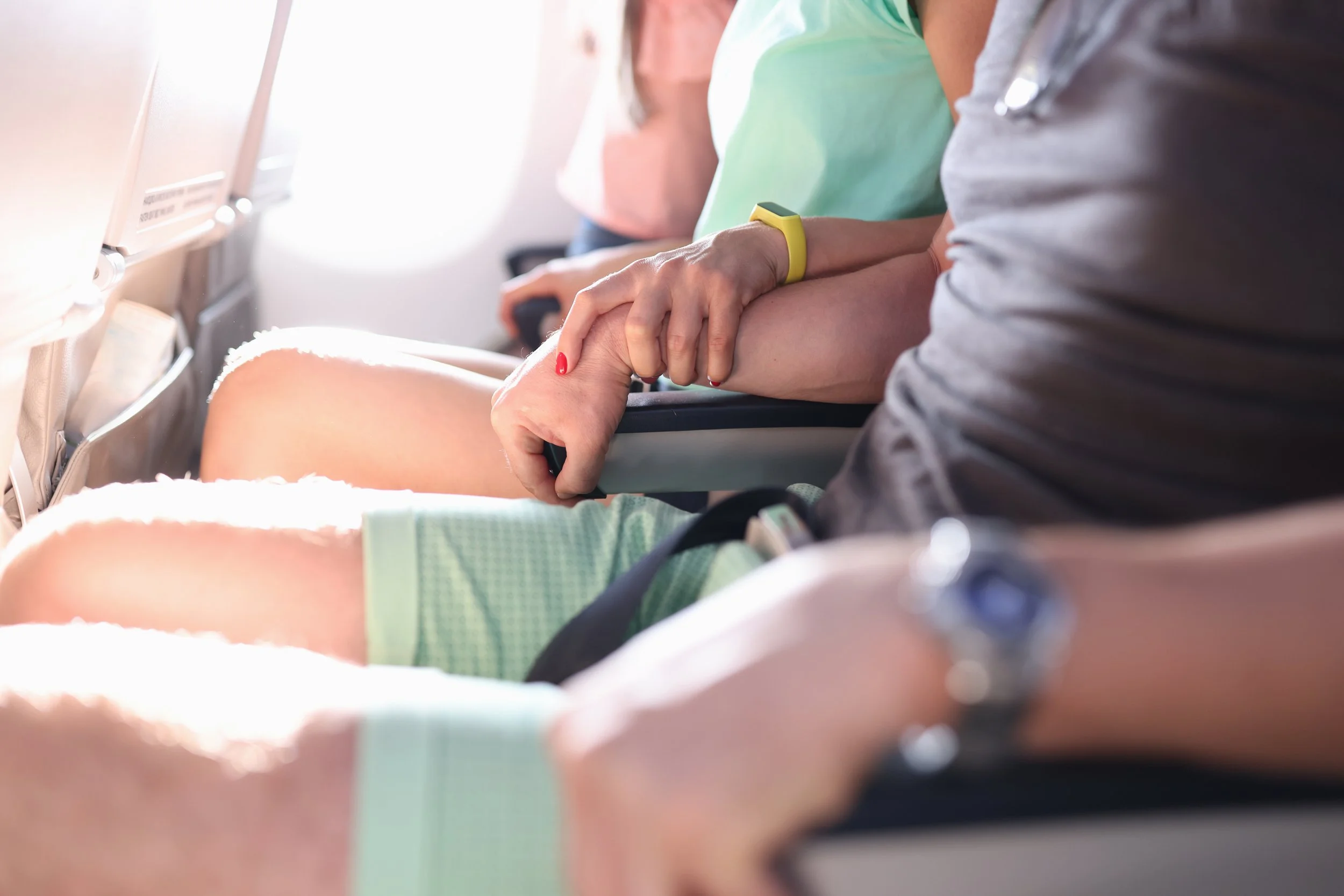turbulence
I tightened my seat belt and gripped the armrest.
Lifting up the shade and then putting it back down, I looked out the window - as if my looking could calm the rough air. I couldn’t help but stare a bit enviously (and a little spitefully) at my fellow travelers who seemed impervious to the bumps.
The pilot had just announced, “We will be experiencing severe turbulence for the next 20 minutes. Flight attendants, please take your seats until it’s safe to get up and move about the cabin.”
For someone who is a nervous flyer, those are dreaded words.
I much prefer to hear from the cockpit, “We are expecting a smooth flight”; words that can lull me into a false sense of security.
In life, the smooth air permits me to go about my day, tackling one task after another - on autopilot, so to speak. There is no time and no need for reflection, and I mostly forget to be grateful - that our kids are happy, our parents are healthy, my car is running well, and work is status quo. Ho hum. I take for granted that everything is okay; I feel in control. I am in control.
And then a bump.
On a plane, a bump (or turbulence) is the result of a number of factors - heat, jet streams, flying over mountain ranges, etc. - which can cause a violent shift in airflow and a dramatic change in altitude, leading the aircraft to bounce around - yawing, pitching, or rolling. The most extreme form of turbulence can cause a plane to lose control.
In life, a bump can range from a light jostle, one that is simply uncomfortable, to the more extreme, armrest gripping moments. I didn’t get into the school I wanted. I didn’t make the team. The interview didn’t go well. There was a small mass discovered on an MRI.
And all of sudden, the control I once felt slips away.
But here is the crazy truth: it is during the turbulence - the frightening, tighten-my-seatbelt moments - that I actually feel most alive.
Because once that pilot has uttered those dreaded words, the adrenaline kicks in, and I think of all of the reasons I want to live. And all of the people I love dearly. And even about those areas of my life I can do better. Be better.
And I am acutely aware of everything - my breathing, the expression on the flight attendant’s face, the smell of the stale coffee in my seatmate’s paper cup, the groaning of the engines, and the taste of the gum in my mouth. For better or worse, I am unabashedly in the present.
When I hit the rough air in life - when things don’t go my way, or I am faced with disappointment, disillusionment, or disease - my response is similar.
I pause; to stop my usual wheel-turning, take stock, and count my blessings.
Often my priorities change - from over-the-top accomplishments, to mere survival.
I pray. Hard.
It’s the turbulence that shows me that I want to live.
It’s the turbulence that makes me wake up, woman up, and remember, again, what is important.
It’s the turbulence that reminds me that we are never in control. It pushes me to let go.
Many trips of white knuckling aboard an aircraft have taught me that there is only one way to dispel the turbulence, and that is to go through it. Certainly, we can search for better air by changing our altitude, or attempt to make the experience somewhat less uncomfortable by slowing our airspeed, but ultimately, we have to approach it head on. There is no way around it.
And although it is helpful to intellectually understand where turbulence comes from, we always work it out in our heart. I don’t welcome turbulence - ever - but it makes the heart stronger and more loving.
And those flights have also taught me that, no matter how scary - painful even - the bumps will eventually diminish. The fasten seat belt light will turn off, and once again it will be safe to move about the cabin.

